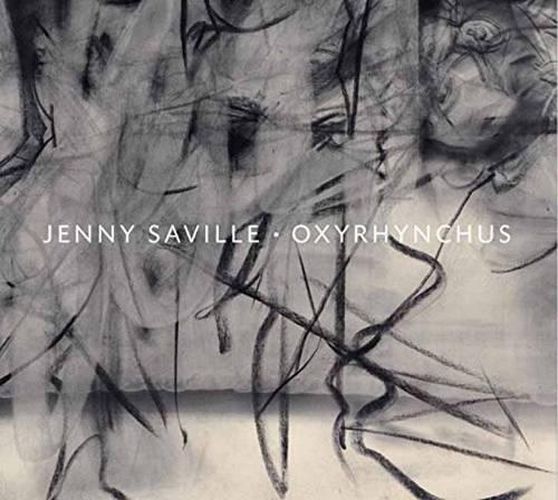Readings Newsletter
Become a Readings Member to make your shopping experience even easier.
Sign in or sign up for free!
You’re not far away from qualifying for FREE standard shipping within Australia
You’ve qualified for FREE standard shipping within Australia
The cart is loading…






Several new works are inspired by the ancient Egyptian rubbish dump at Oxyrhynchus, one of the most important archeological sites ever discovered. Heaps of discarded documents and literature, incredibly preserved in the area’s dry climate, are now invaluable; fragments of ancient Greek texts such as Euclid’s Elements and the poems of Sappho are among the excavated papyri. Saville alludes to this history through a deep layering of paired subjects: faces, torsos, and limbs overlap with shadows and reflections, palimpsests of living bodies and ancestral apparitions. Silhouettes drawn in charcoal through the surfaces of oil paint underscore the motion of the central embracing figures, while evoking the timeless human process of sketching. These intermediate studies echo the shifting status of the unearthed papers-once discarded, now treasured. Time is further compressed by Saville’s adaptation of various historical approaches to portraiture, from De Kooning’s fluid abstractions of the female figure; to the almost combined couples of Picasso’s late paintings and Japanese Shunga prints; to Titian’s placement of subjects within dramatic perspectival landscapes, exemplified by Nymph and Shepherd (c. 1570-75). Saville’s own figures merge ethereally with settings that have been loosely appropriated from photographs and evoke the backdrops of Renaissance paintings.
Jenny Saville was born in Cambridge, England in 1970. She studied at the Glasgow School of Art. She has had several solo museum exhibitions, from the Museo d'Arte Contemporanea, Rome (2005), to Eroi, at the Galleriad'Arte Moderna, Torino, Italy (2011).
$9.00 standard shipping within Australia
FREE standard shipping within Australia for orders over $100.00
Express & International shipping calculated at checkout
Several new works are inspired by the ancient Egyptian rubbish dump at Oxyrhynchus, one of the most important archeological sites ever discovered. Heaps of discarded documents and literature, incredibly preserved in the area’s dry climate, are now invaluable; fragments of ancient Greek texts such as Euclid’s Elements and the poems of Sappho are among the excavated papyri. Saville alludes to this history through a deep layering of paired subjects: faces, torsos, and limbs overlap with shadows and reflections, palimpsests of living bodies and ancestral apparitions. Silhouettes drawn in charcoal through the surfaces of oil paint underscore the motion of the central embracing figures, while evoking the timeless human process of sketching. These intermediate studies echo the shifting status of the unearthed papers-once discarded, now treasured. Time is further compressed by Saville’s adaptation of various historical approaches to portraiture, from De Kooning’s fluid abstractions of the female figure; to the almost combined couples of Picasso’s late paintings and Japanese Shunga prints; to Titian’s placement of subjects within dramatic perspectival landscapes, exemplified by Nymph and Shepherd (c. 1570-75). Saville’s own figures merge ethereally with settings that have been loosely appropriated from photographs and evoke the backdrops of Renaissance paintings.
Jenny Saville was born in Cambridge, England in 1970. She studied at the Glasgow School of Art. She has had several solo museum exhibitions, from the Museo d'Arte Contemporanea, Rome (2005), to Eroi, at the Galleriad'Arte Moderna, Torino, Italy (2011).